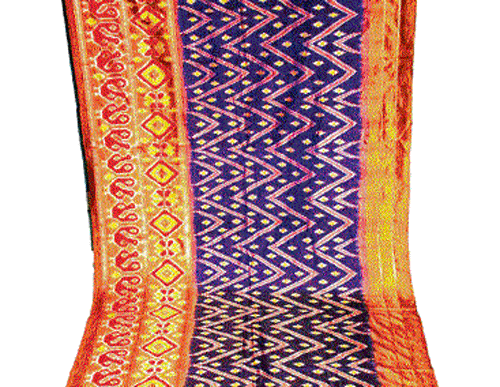
My recent trip to Gujarat had only one mission — to visit Patan, hometown of the world-renowned Patan patola saris. Yes, the Patan patola saris of Gujarat, that are some of the costliest saris on the face of this earth. I wanted to visit Patan to understand why those saris were priced the way they were — anything from Rs 1.5 lakh, making them almost unreachable for most of us.
Well, my visit to Patan introduced me to the history of these saris too. According to recorded history, these saris are woven by the Salvi silk weavers of Karnataka and Maharashtra who made Patan their home in 12th century AD during the reign of Solanki Rajputs, rulers of the whole of Gujarat and parts of Rajasthan, known for their encouraging attitude towards art and culture.
Solanki rulers were so enamoured by the intricacy of Patan patola weaving that they themselves wore patola robes! After the fall of Solankis, rich Gujarati merchants were equally encouraging towards Salvi weavers, so much so that Patan patola saris almost became a must-have for Gujarati women.
Patola saris are woven in many cities including Surat, Cuttack, Hyderabad and Pochampalli too. However, it is the Gujarat patola that is the best of the lot. Even in Gujarat, patola saris are of two kinds — Rajkot patola and Patan patola. While the Rajkot patola is single ikat, Patan patola is double ikat.
The best part of these saris is that they can be worn on both sides, since both the sides look the same. Known for their bright colours and geometric designs, these saris are woven on simple traditional handlooms. The dyes used are made from vegetable extracts and other natural ingredients and hence are longlasting, inspiring the famous Gujarati saying that the colour lasts longer than the fabric!
According to Vaishnav Tapadia, a Salvi weaver, there are four distinct styles in the patolas woven in Gujarat — while patolas with designs of flowers, elephants and parrots are woven for the Jains and Hindus, patolas woven for Maharastrian Brahmins are plain with borders bearing designs of women and birds, those for Muslims have geometric designs, and patolas woven for export are altogether different. Patolas enjoy a great demand in the Far East, I was told.
If Tapadia is to be believed, patola saris last for generations, without losing their sheen. Their making is also very time consuming, owing to the laborious process involved. “Patola saris take as long as six months to make as dyeing alone can take anything from 40-50 days, while weaving takes around a month,” says Tapadia.
Talking of costs, each sari can cost anything from Rs 1.5 lakh to Rs 3 lakh, as only genuine silk is used, I was told.
I left Patan, rich with information on patolas, but without the courage to buy one. Of course, they even make dupattas and rumaals for people like us who cannot afford to buy patola saris. But, dupattas are dupattas and rumaals are rumaals — they can never take the place of the famed Patan patola saris, you see.
I resolved to return to Patan, some day, with lots of money, to buy the saris.